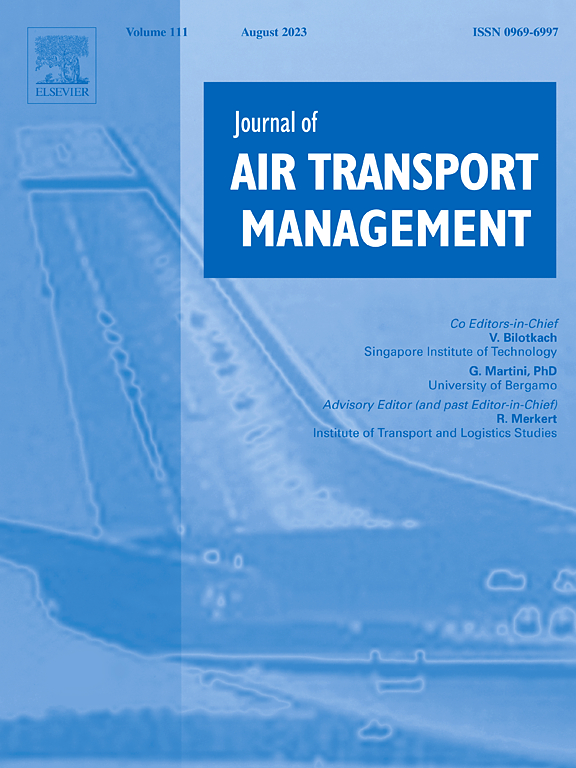Multi-layer dynamic network model of traffic flow in terminal area and complexity analysis
IF 3.6
2区 工程技术
Q2 TRANSPORTATION
引用次数: 0
Abstract
Advanced modeling frameworks are required to examine multi-dimensional interactions among airspace structure, traffic flow, and safety threats due to the expanding complexity of terminal area (TMA) air traffic systems, which are fueled by increasing airspace congestion and operational inefficiencies. This paper proposes a novel three-layer dynamic network model to characterize TMA air traffic operations, integrating an air traffic situation evolution network (ATSEN) for spatiotemporal traffic distribution, an air traffic conflict network (ATCN) for safety-related conflict dynamics, and an integrated flow-driven dynamic network (IFDN) to map flow transmission patterns. To measure operational complexity and important risk indicators, an analytical framework that combines intricate network topology measurements and traffic flow dynamics is created. The model’s capacity to recognize crucial flight segments and assess operating conditions in real time is demonstrated by empirical validation using actual radar data from the Beijing TMA. Key findings show that network robustness and conflict intensities fluctuate under dynamic situations, with peak complexity occurring during periods of high traffic. In addition to providing useful insights for TMA design and operational decision-making, the framework gives air traffic controllers a multifaceted instrument to improve flow management, reduce congestion, and increase safety.
终端区交通流多层动态网络模型及复杂性分析
由于终端区域(TMA)空中交通系统的复杂性不断扩大,空域拥堵和运行效率低下加剧了空域结构、交通流和安全威胁之间的多维相互作用,因此需要先进的建模框架来检查。本文提出了一种新的三层动态网络模型来表征TMA空中交通运行,该模型集成了用于交通时空分布的空中交通态势演化网络(ATSEN)、用于安全相关冲突动态的空中交通冲突网络(ATCN)和用于绘制流量传输模式的综合流驱动动态网络(IFDN)。为了测量操作复杂性和重要的风险指标,创建了一个结合复杂网络拓扑测量和流量动态的分析框架。利用北京TMA的实际雷达数据进行了经验验证,证明了该模型识别关键飞行段和实时评估操作条件的能力。主要研究结果表明,网络鲁棒性和冲突强度在动态情况下波动,在高流量期间出现峰值复杂性。除了为TMA设计和运营决策提供有用的见解外,该框架还为空中交通管制员提供了一个多方面的工具,以改善流量管理,减少拥堵,提高安全性。
本文章由计算机程序翻译,如有差异,请以英文原文为准。
求助全文
约1分钟内获得全文
求助全文
来源期刊

Journal of Air Transport Management
TRANSPORTATION-
CiteScore
12.40
自引率
11.70%
发文量
97
期刊介绍:
The Journal of Air Transport Management (JATM) sets out to address, through high quality research articles and authoritative commentary, the major economic, management and policy issues facing the air transport industry today. It offers practitioners and academics an international and dynamic forum for analysis and discussion of these issues, linking research and practice and stimulating interaction between the two. The refereed papers in the journal cover all the major sectors of the industry (airlines, airports, air traffic management) as well as related areas such as tourism management and logistics. Papers are blind reviewed, normally by two referees, chosen for their specialist knowledge. The journal provides independent, original and rigorous analysis in the areas of: • Policy, regulation and law • Strategy • Operations • Marketing • Economics and finance • Sustainability
 求助内容:
求助内容: 应助结果提醒方式:
应助结果提醒方式:


